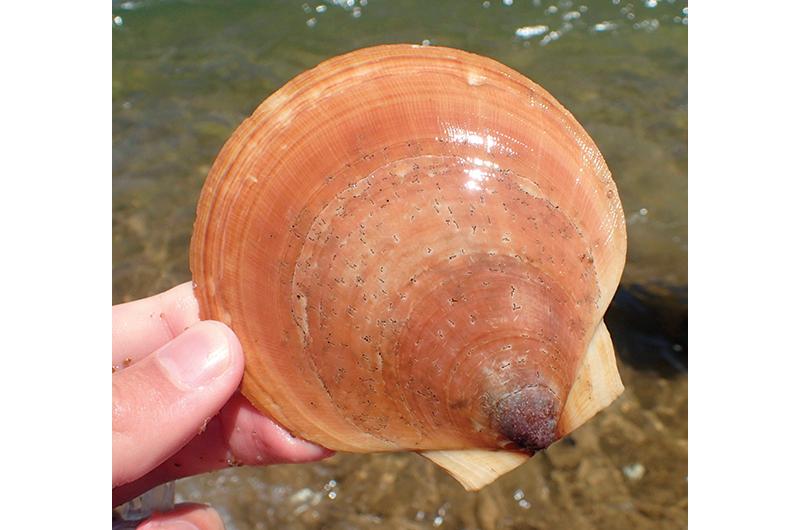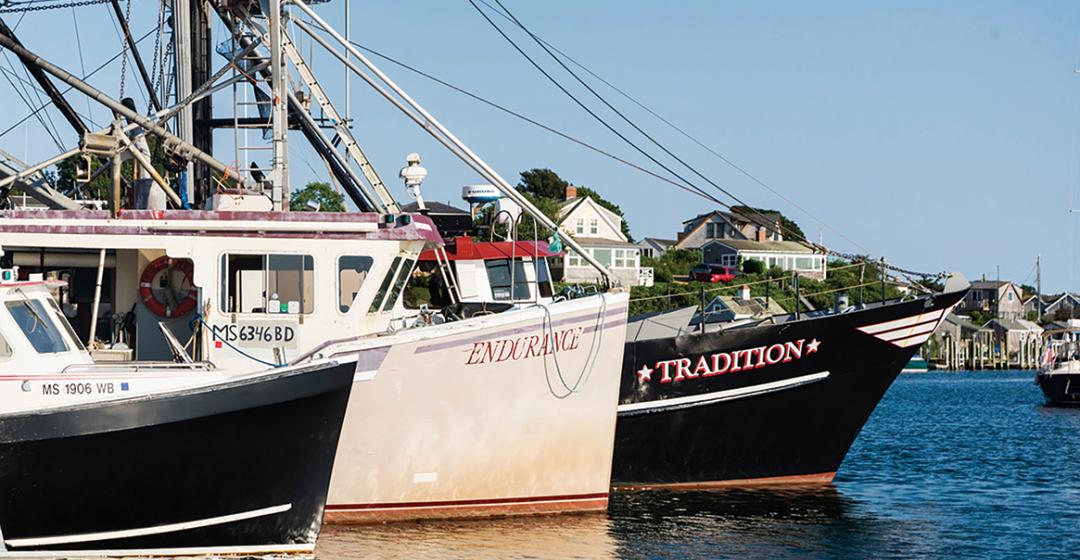Sometimes it seems like sea scallops don’t get any respect. While elsewhere they’re a prized part of a seafood dinner, around here we go crazy for bay scallops. We wait with bated breath for bay scallop season to open in the fall and happily pay top dollar for the sweet little jewels that come from the waters around Martha’s Vineyard, Nantucket, and Cape Cod.
Their popularity is deserved. Vineyard bay scallops are sweet and delicious, a true local delicacy. The fact that they are available fresh at only certain times of year makes them elusive and exciting, sort of like a summer friend who you want to spend as much time with as possible.
And yet Atlantic sea scallops are here for us year-round, which any Islander in the depths of winter will tell you is a quality not to be taken for granted.
That’s not their only attribute. Sea scallops are larger (up to three times the size), meatier, and more economical than bay scallops. (That was especially true this past year, when bay scallop availability on the Cape and Islands was way down and prices were high.) Whereas bay scallops feel like a splurge, sea scallops can be put in your regular seafood menu rotation. Think of sea scallops as New York strip and bay scallops as filet mignon. Personally, I prefer New York strip.

Plus, you don’t have to feel guilty about eating sea scallops since, unlike so many other seafood options, the fishery is in pretty good shape. Atlantic sea scallops are part of the bivalve family, like clams and oysters, and are harvested in the northwestern mid-Atlantic from North Carolina up to Canada. According to National Oceanic and Atmospheric Administration (NOAA) Fisheries, which manages the stocks, the fishery is one of the most valuable in the United States.
The picture wasn’t always so rosy. Back in 1994, the Atlantic sea scallop industry appeared to be collapsing, prompting NOAA to introduce a temporary moratorium on new permits and harvesting in certain areas and, later, a number of regulations, such as limits on the number of fishing days permitted and crew members allowed on boats. It also introduced new gear that would let immature scallops escape dredging nets.
The efforts worked. Today, NOAA classifies the sea scallop as sustainably managed and responsibly harvested. Sea scallops can begin to reproduce at two years old, but become solid reproducers by four years old and can live twenty years or more. Female sea scallops can produce hundreds of millions of eggs per year, hence why with good management and regulation this industry is thriving.
Given sea scallops’ reliability, it’s no surprise that they show up on many restaurant menus in many iterations. In casual seafood restaurants you’re likely to find them fried or boiled. (No snobbery here: in my opinion there’s nothing better than a lightly floured fresh sea scallop served piping hot from the deep fryer and spritzed with lemon.) And, of course, there are the always popular bacon-wrapped scallops, an especially good choice around the holidays. High-end restaurants often serve sea scallops raw (as ceviche or crudo) or seared to a delicate golden brown.
The latter is my favorite preparation, one that I regularly make at home. Despite its fancy appearance, this dish is easy enough for a home cook to accomplish. The technique comes down to four easy tips.
Number one: Keep your scallops dry. When you buy scallops, they are often wet with their own liquor. If you add them to a pan like this, they won’t sear. They’ll poach and probably overcook and become rubbery.
I like to place them on a paper towel for at least five minutes per side, allowing the liquid to drain. I don’t wash them beforehand either. There’s no need to, and doing so will just add more liquid.
Number two: Hold off on the seasoning. I find that pepper can muddy the appearance of the scallop if it burns. And, quite frankly, I’ve just never found that they need it. Seared scallops get so much of their flavor from caramelization. In the recipe included on this page, you’ll notice that I use prosciutto, white wine, and butter (salted, if that’s your preference). All of these items will add a salty flavor to the dish; no need to add more.
Number three: When you are ready to begin cooking the scallops, make sure not to overcrowd the pan. I like to prepare scallops in batches, since overcrowding will cool down the pan and create moisture, which – again – will give you more of a poach then a delicious sear.
Number four: Once the scallops are added to the hot pan, leave them alone. You want to cook them for about two minutes per side without stirring or jostling them; that’s what creates that delicious golden-brown caramel crust.
There you have it – don’t wash, don’t season, don’t overcrowd, and don’t jostle the pan: the secret to perfectly seared sea scallops. Give it a shot and see for yourself how good homemade sea scallops can be. I don’t expect you to give up on bay scallops entirely – that would be crazy – but you might find yourself newly inspired to pay sea scallops their due respect.
The following recipe was originally published along with this article:
Seared Sea Scallops with Spring Peas, Leeks, and Prosciutto







